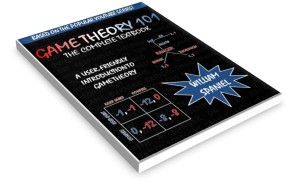Sometimes strict dominance takes us nowhere. Other times, we may make one or two inferences based on it but then get stuck. What do we do then? The next option is to look for Nash equilibrium. This lesson uses the stag hunt to introduce the concept of pure strategy Nash equilibrium (PSNE). In a pure strategy Nash equilibrium, all players take deterministic actions with no element of randomness.
Takeaway Points
- Holding all other players’ actions constant, a best response is the most profitable move a particular player can make.
- A game is in Nash equilibrium when all players are playing best responses to what the other players are doing.
- Put differently, a Nash equilibrium is a set of strategies, one for each player, such that no player has incentive to change his or her strategy given what the other players are doing. (This is the definition of Nash equilibrium from Lesson 1.3 of my textbook.)
- Nash equilibria can be inefficient.
- At least one Nash equilibrium exists for all finite games. This is known as Nash’s Theorem. John Nash, the person that A Beautiful Mind is based on, first proved this, hence why his name is attached to both the theorem and the solution concept.
- A game is finite if the number of players in the game is finite and the number of pure strategies each player has is finite. The stag hunt has two players, each of whom has two pure strategies. Therefore, it is a finite game.
- There may or may not be a Nash equilibrium in infinite games.

